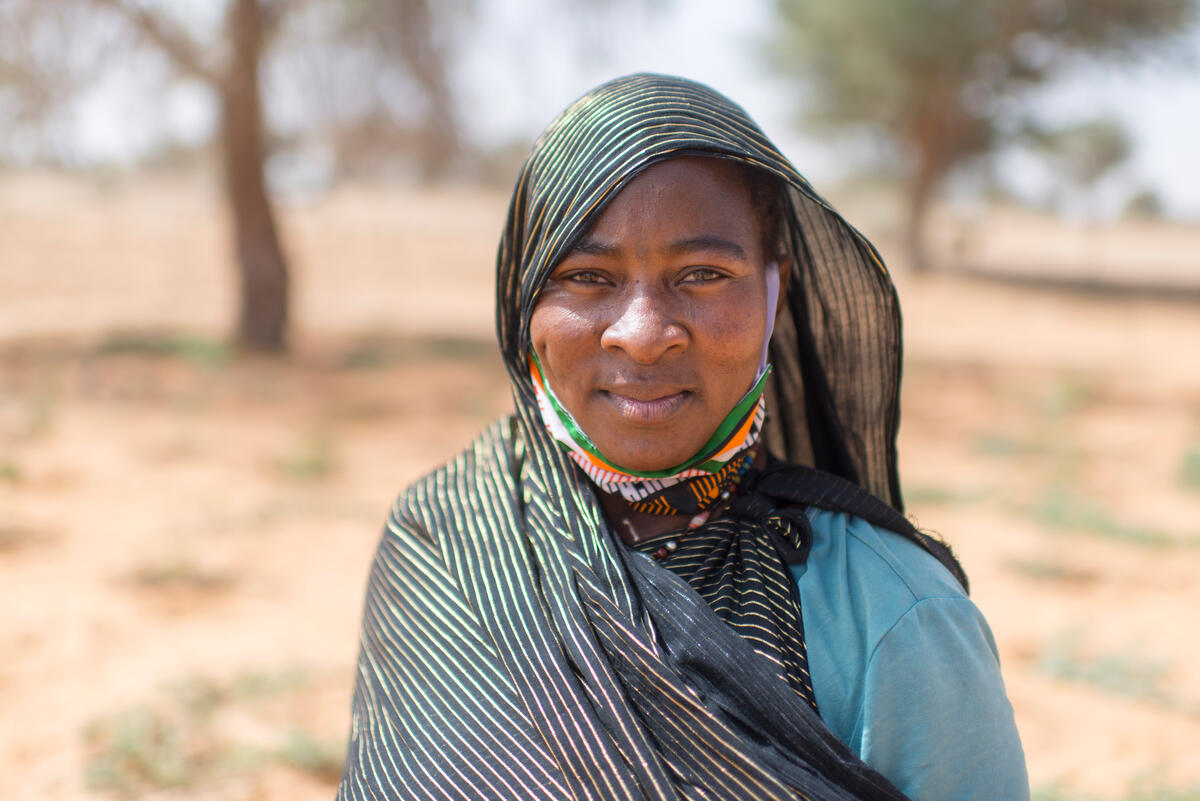A woman's story in the Pakistan camps
A woman's story in the Pakistan camps

YAR HUSSAIN CAMP, Pakistan, July 13 (UNHCR) - For years, Mariam, a young mother of six from Pakistan's Swat Valley, was obliged by tradition and custom to remain at home looking after her children and keeping house for her husband, Shaukat. She could scarcely imagine how much of that would change when conflict came to the North West Frontier Province (NWFP).
When the bombing got closer to their village near the Swat capital of Mingora in May, the couple fled with their children and made their way over the rugged terrain to safer areas in the south of the province.
"Imagine, I had been confined in my house for many years in Swat and suddenly I had to climb the mountains - it was very new for me," Mariam told me in her family's new home, a tent in the Yar Hussain Camp managed by the UN refugee agency in NWFP's Swabi district.
"It reminded me of when I was a little girl and free to walk around," the 28-year-old recalled. "But when I grew up I could not go out anymore. So when I climbed those mountains some weeks ago, I was overwhelmed by how the situation had turned out." Mariam is one of tens of thousands of women whose lives have been overturned by recent events.
The bombing was traumatic. "My children were crying all the time," Mariam said. "They were terrified by the noise. I had to put cotton wool in their ears to calm them down. We were only thinking of one thing: we must save our children, we must put them in a safe place."
And yet in her haste to flee, Mariam left one behind. "I thought I had taken [my one-month-old son, Noor Zaman] in the blanket I was holding in my arms, but he was not there," she recalls, tears in her eyes." As we were fleeing, my husband asked if I had our son and I realized I did not have him. We rushed back to the house to pick him up."
The family made it to Buner, the district south of Swat, after paying 2,500 rupees (US$40) for the bus ride, but had to leave again in two weeks when the family whose home they were staying fled themselves. Mariam's family walked nearly six hours to reach Swabi district (and Yar Hussain Camp). Now the family is safe. They are receiving shelter and food.
But while her family is better off for now, life in the dusty camp is proving particularly challenging for Mariam and other traditional Muslim women there.
Back in the Swat Valley, her house was surrounded by high walls in order to protect the honour of the womenfolk within. Mariam said she had not been shopping or gone for a picnic since she was a child. "We were only allowed to go out of the house in exceptional cases, such as for a wedding, a funeral or for medical treatment. I would wear a burqa [a formless outer garment cloaking the whole body] and had to be accompanied by a male relative."
"My husband brought me everything, so I didn't need to venture beyond the walls of our house," she added. "That is our culture."
But in the camp, she can't avoid venturing outside her tent in order to tend to her ailing father-in-law in a nearby tent or to visit the camp clinic. To make matters worse, she was not able to flee with her burqa so that when she does go out she is not sufficiently covered. "I feel very uncomfortable without the burqa in the camp," she told me. ["There are many men I do not know (in the camp)."]
Mariam stays in her hot tent as much as possible. She and other women are being treated for a painful kidney complaint at the camp clinic because of their reluctance to go and use the toilets during the daylight hours. "It is very hot here," she admitted. Mariam has only seen her mother once in seven weeks even though she lives in a nearby tent.
To help these women, the UN refugee agency has used plastic sheeting to create purdah walls around blocks of tents and so ensure privacy for the women and girls within. Some families have created their own purdah walls around individual tents.
Mariam's husband is also worried about her venturing out. "He is afraid I would get lost in the camp."
Shaukat, her husband, explains that he and his illiterate family cannot read camp signs and could easily get lost in Yar Hussain. And he insists that he is trying to protect his wife. "There are also different tribes in the camp; I don' t want my wife to be exposed to danger. There are many men walking around in the camp during the day . And not everyone is a gentleman."
Mariam looks at me and shows me her national identity card. There is no picture of her on it, only her fingerprints. "Can you imagine? I am 28 years old now and I never had a picture of me taken. None for my whole life." Mariam quietly takes Noor Zaman, now almost three months old, in her arms and rocks him. Later she will go and check on her father-in-law in the nearby tent. Then she will come back to her own tent, bearing the heat, but hoping one day to go back to her village in Swat where the temperatures are cooler and where she can play outside with her children in the yard of her house, behind the high walls.
By Hélène Caux in Yar Hussain Camp, Pakistan









